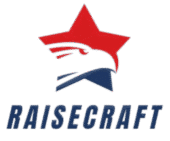In an increasingly digital world, printed application forms still hold significant value across industries. Whether you’re managing job applications, school enrollments, membership signups, or event registrations, having well-designed and professionally printed application forms can streamline your process and enhance credibility.

Why Printed Application Forms Still Matter
While many organizations are moving online, printed forms offer benefits that digital formats sometimes can’t:
-
Accessibility: Not everyone has access to computers or stable internet.
-
Professionalism: A printed form often feels more official and trustworthy.
-
Record-Keeping: Physical copies are easy to file and reference in settings that don’t rely heavily on digital infrastructure.
-
On-the-Spot Completion: Ideal for walk-ins at events, offices, or customer service desks.
Types of Application Forms Commonly Printed
Printed forms can be customized for a wide range of uses, including:
-
Job Application Forms
-
School Admission Forms
-
Loan or Financial Assistance Applications
-
Membership or Subscription Forms
-
Rental or Lease Applications
-
Event Registration Forms
Each type serves a different purpose but shares common elements: clarity, structure, and ease of use.
Key Elements of a Well-Designed Application Form
When designing application forms for printing, keep the following in mind:
-
Clear Layout: Use sections, headings, and boxes to guide the user.
-
Legible Fonts: Avoid overly decorative fonts; stick to readable sizes.
-
Ample Writing Space: Ensure enough room for handwriting responses.
-
Instructions: Provide clear directions at the top or near complex sections.
-
Branding: Add your logo and contact info for professionalism.
Paper Options and Printing Techniques
Your choice of paper and printing method can affect the form’s durability and appearance.
-
Paper Types: Standard 80-100gsm for everyday use; heavier stock (120-160gsm) for premium look or long-term storage.
-
Color vs. Black & White: Color forms can highlight sections or branding, while black & white is cost-effective.
-
Carbonless Copies (NCR): Ideal if you need duplicates (e.g., one for the applicant, one for the office).
-
Binding Options: Loose-leaf, stapled sets, or booklet-style depending on form length.
Digital Integration Options
Even with printed forms, it’s possible to integrate digital processes:
-
QR Codes: Link to your online portal or resources.
-
Form Scanning Templates: Compatible with form recognition software.
-
Custom Serial Numbers: For tracking and verification.
Where to Get Your Forms Printed
Professional print shops offer services including:
-
Custom design assistance
-
Bulk printing discounts
-
Fast turnaround times
-
Specialty paper or finishing services
Look for a provider that understands form layout and can help you avoid common pitfalls like smudging, alignment errors, or ink bleeding.
Final Thoughts
Printed application forms remain a practical and professional solution for many businesses and organizations. When designed and printed properly, they not only improve data collection but also leave a positive impression on applicants. Whether you need 50 forms or 5,000, investing in quality printing pays off in both appearance and usability.
